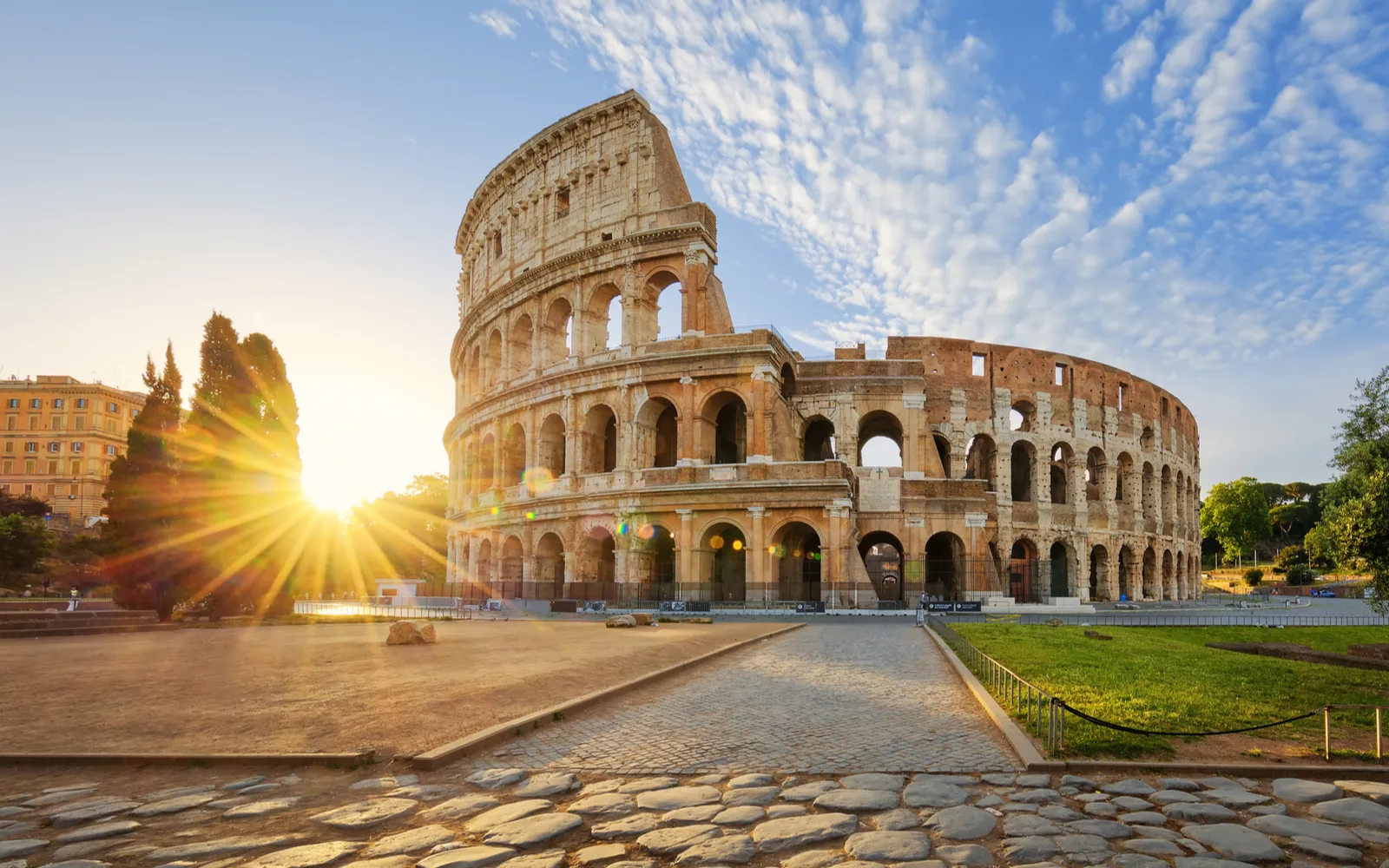What's the best time to visit Italy?
The best time to visit Italy is during late spring (May and June) and early fall (September and October), when the weather is most welcoming. These months offer ideal temperatures for exploring, with all regions active and attractions open at full capacity. While May and June promise warmer days, September and October are mildly cooler, perfect for comfortable sightseeing.
Planning a trip to Italy soon? Good choice! This is one of the top travel destinations and the country is jam-packed with sights to see, foods and wines to taste, cities and villages to explore, and so much history to appreciate.
To have the smoothest trip without weather, prices, or crowds ruining your plans, you’ll want to know the best time to visit Italy, the worst time to go, and what each season is like in the most popular regions.
We’ll show you the best time to go for great weather, optimal sightseeing, cheap prices, and fewer crowds. You’ll see the worst time to visit and helpful travel tips to make the most of your stay. It’s all here in our quick travel guide!
The Overall Best Time to Visit Italy

Przmemek Iciak/Shutterstock
The best time to visit Italy is during the late spring/early summer (May and June) and in the early fall (September and October).
This is when Italy is fully alive and vibrant with the most welcoming weather. All tours and attractions are open at full capacity and it’s the best time of year to get out and see Italy in any region.
All regions of Italy are busy and in full swing at these times of year, which make up the start and end of Italy’s peak tourism season (which runs May through September). You’ll experience ideal weather with temperatures ranging from 50°-85°F throughout the country in May and June.
The climate is similar in September and October with temperatures ranging from 55°-75°F, but a little more likelihood of rain at this time of year. It’s mild, comfortable, and mostly sunny during these periods. Perfect for your visit!
Cheapest Time to Visit Italy
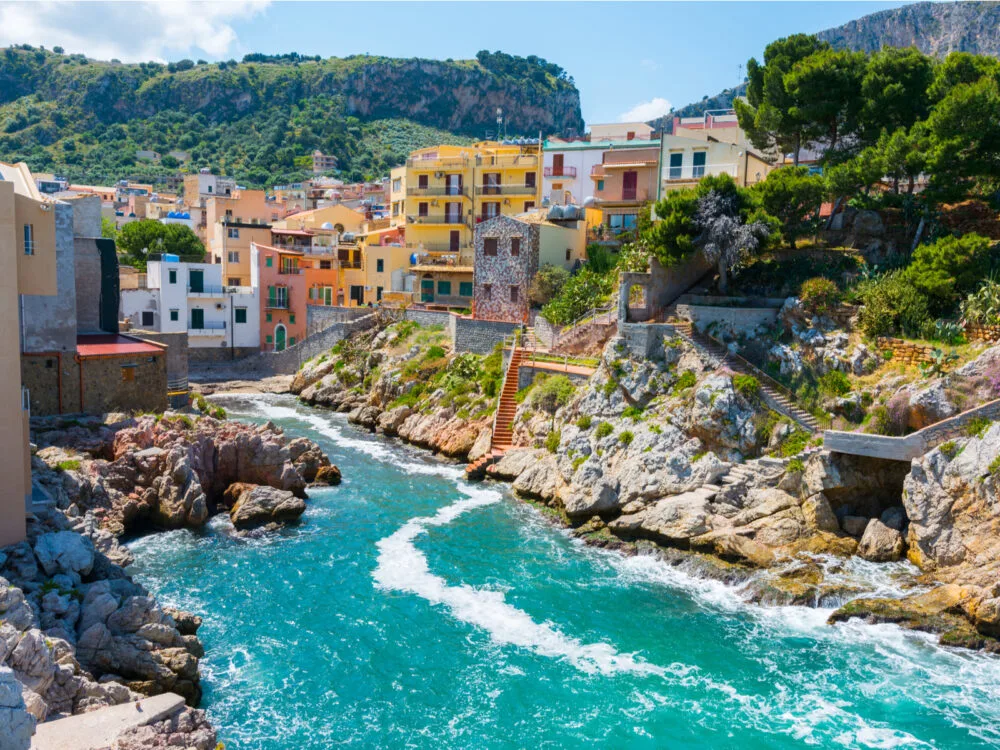
Lucky Team Studio/Shutterstock
The cheapest time to visit Italy is during February and November. These are the cheapest months to fly here, making your airfare much lower than any other time of year.
You’ll also find lower prices on hotels, rental cars, tours and attractions, and food while you’re there at these times of year.
February in Italy is cheap and much less crowded, mostly due to the cold, damp weather. Temperatures struggle to hit highs in the low 60s (southern Italy) and mid-40s (northern Italy) in February.
It’s not the best weather for outdoor sightseeing and activities, but it’s perfect for touring museums, cathedrals, and participating in cold-weather sports. November in Italy is another cheap time to go.
It’s the rainiest month for Italy, so you’ll deal with frequent showers and overcast skies this time of year. The temperatures in November are similar to February but a little warmer – highs around 50°F (north) and 65°F (south) are cool but pleasant.
Since February is the month for festivals like the Venice Carnival, Saint Agatha’s Feast Day, San Remo Song Festival, Almond Blossom Fair, and the Olive & Bruschetta Festival, book your trip for February to have the best Italian experience on a budget.
Least Busy Time to Visit Italy
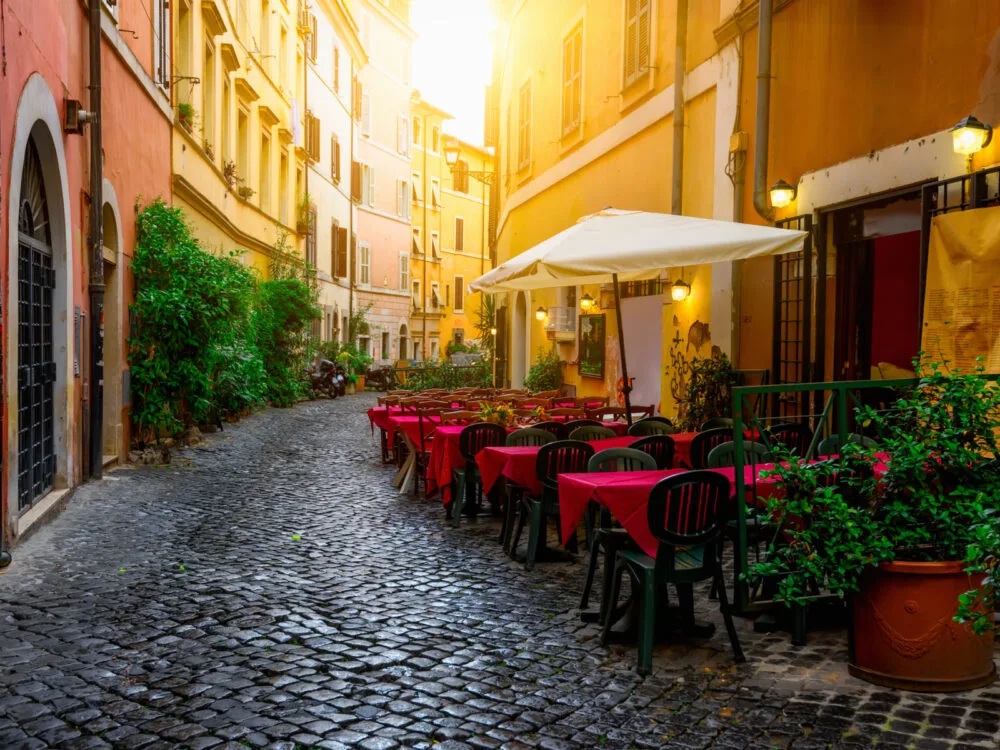
Catarina Belova/Shutterstock
The least busy time to visit Italy is from November to February. This period is Italy’s low season, when it sees the fewest tourists of the year and things calm down considerably.
The weather during Italian winter is cold and rainy, but it shouldn’t stand in the way of your plans. Since November is the rainiest month for all of Italy, it has the lowest number of visitors and is one of the cheapest times to visit.
In December, the rainfall takes a major dip and things begin to dry out a bit. By the time January and February roll around, Italy is experiencing less rainfall than most of the other months of the year – only March and July are drier.
There’s a brief uptick in visitors from mid- to late December, when holiday travelers arrive en masse. Rates on flights and hotels rise as more tourists pour in at the end of the year, but things quickly settle back down in January.
For the most peaceful, least-crowded visit to Italy, plan your stay according to what you want out of the trip.
If you’re trying to plan a less-crowded trip on a budget, go in November or February (the cheapest months to visit). If you want the best weather, go in January or February (much drier than November and December).
If you want the warmest temperatures, go in November (around 65F in southern Italy). Skip the coastal villages and towns during the winter, since many are nearly shut down in the cold weather and due to rougher seas this time of year.
Expect shorter hours for tours and sight-seeing attractions in winter – plan to start your days early if you want to sightsee at this time of year. In northern regions of Italy, snowfall is common and expected in winter, so prepare and pack accordingly.
Worst Time to Visit Italy
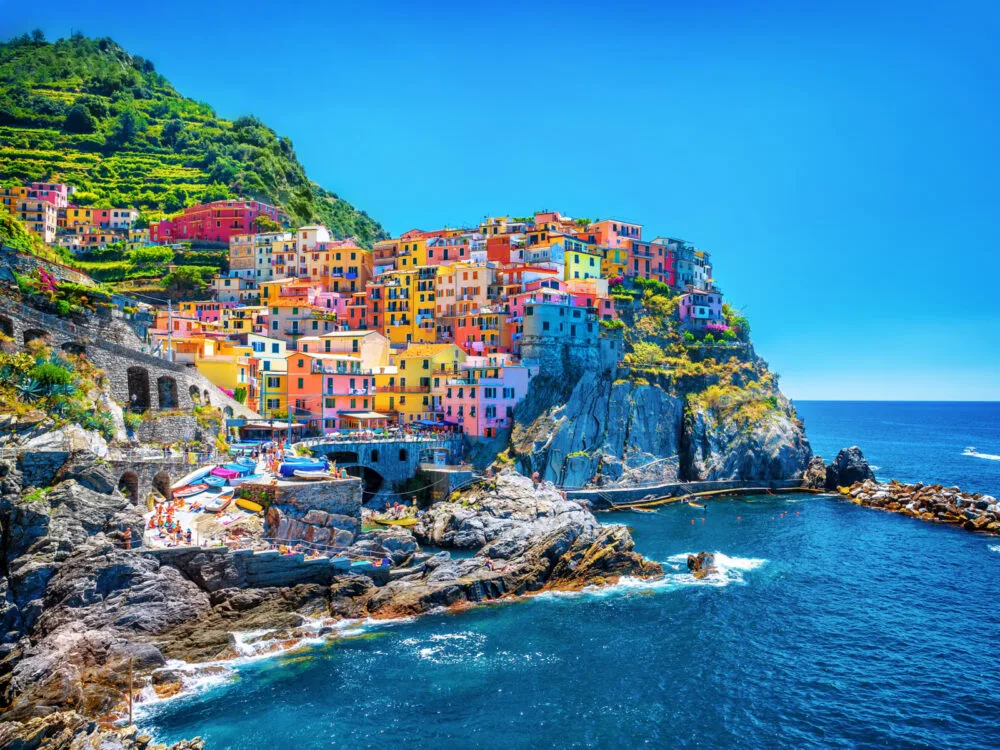
Anna Om/Shutterstock
The worst time to visit Italy is during July and August. This is the middle of Italy’s peak tourism season and are the hottest months of the year in Italy.
That makes it much less pleasant to stroll through the cities and sightsee. The heat comes along with high humidity levels above 50% that exacerbate and exaggerate the temperatures. On an average July day at 90F and 50% humidity, the temperature feels like a miserable 107F.
The heat is so oppressive that it’s common for native Italians to take the entire month of August as their summer vacation, escaping the hottest inner-city zones to beat the heat.
As a result, many businesses shut down completely during the month of August. You might see a lot of “Closed” signs hanging in business windows this time of year.
But this stifling heat doesn’t stop international travelers from arriving in droves. With so many people in the country in July and August, flights, hotels, and rental car agencies are priced higher and booked up for months in advance.
This makes it harder to plan a last-minute trip to Italy in late summer. Honestly, that’s not necessarily a bad thing – it might encourage you to plan your trip for a more pleasant time of year like the winter, spring, or early fall.
Italy by Month: Climate & Activities
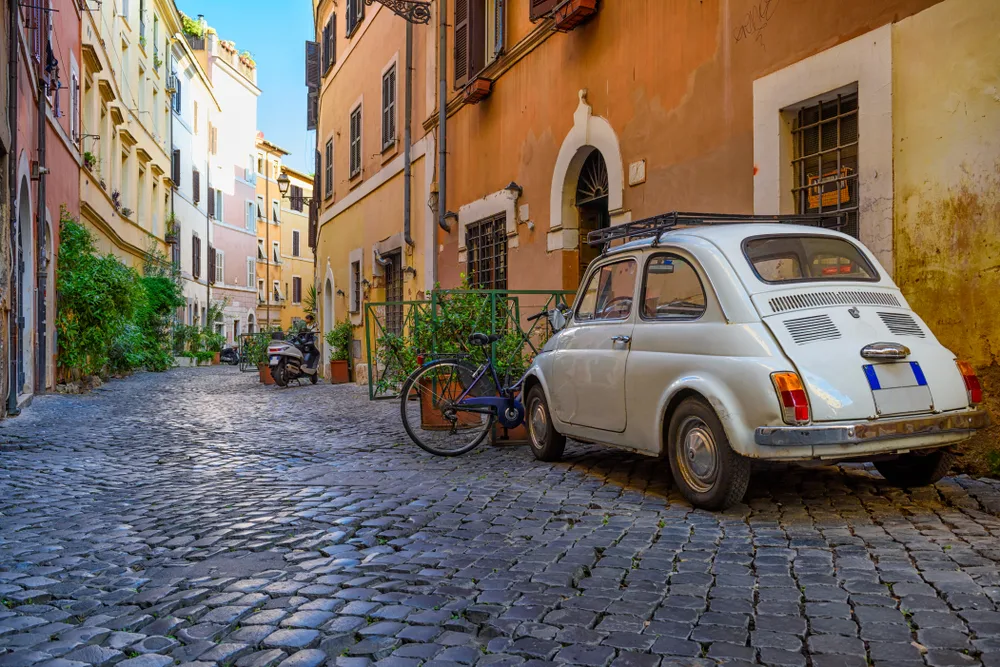
Catarina Belova/Shutterstock
Still unsure about the best time to visit Italy? Take a look at our summary of the weather and climate by month below:
January
Winter temperatures in Italy vary by region. In the north, cities like Milan and Venice may experience temperatures between 32-45°F, providing a chilly atmosphere. It’s an excellent time for winter sports in the nearby Alps or exploring historic architecture.
February
Similar to January, February maintains cool temperatures between 34-48°F in northern Italy. Visitors can enjoy diverse culinary scenes in cities like Milan, explore local markets, and wander through historic neighborhoods like Venice’s iconic canals.
March
As spring begins in Italy, temperatures in northern Italy range from 39-53°F. This marks the start of cherry blossoms in some areas, and outdoor activities, such as hiking in nearby parks or exploring waterfronts, become popular.
April
Spring continues with temperatures between 42-57°F. April is an ideal time for attending festivals, such as the Rosebud Festival or San Efasio Procession. It’s also a great time to witness the emerging greenery in cities.
May
In May, Italy sees temperatures ranging from 47-63°F. It’s a great month for outdoor exploration across Italy, with blooming flowers in city parks and opportunities for activities like hiking or enjoying coastal regions.
June
Summer arrives with temperatures between 52-69°F. June offers long days of daylight, making it perfect for outdoor activities like hiking in the Italian countryside or attending music festivals such as the Festa dei Due Mondi in Spoleto.
July
In July, Italy maintains mild temperatures from 56-74°F. Summer is in full swing, with outdoor concerts, farmers’ markets, and water activities in coastal regions attracting locals and tourists alike.
August
August sees temperatures between 57-75°F. It’s an ideal time for exploring Italy’s islands, like Sicily or Sardinia, and enjoying the country’s parks and natural beauty.
September
As fall begins in Italy, temperatures in Italy range from 53-68°F. September offers a pleasant transition, with outdoor events, harvest festivals, and opportunities to explore the diverse neighborhoods of cities.
October
Fall temperatures range from 47-59°F. October is perfect for admiring fall foliage in Italian parks, attending local harvest festivals, and experiencing the vibrant arts and music scenes.
November
November sees temperatures between 42-52°F. It’s a cozy month for coffee lovers, with plenty of local coffee shops to explore. Indoor activities, like visiting museums and art galleries, become popular.
December
Winter returns to Italy with temperatures ranging from 37-47°F. December brings holiday festivities across Italy, with cities adorned in lights and decorations. Visitors can enjoy holiday markets, seasonal performances, and the festive atmosphere of Italian towns and cities.
When to Visit Italy: Final Thoughts
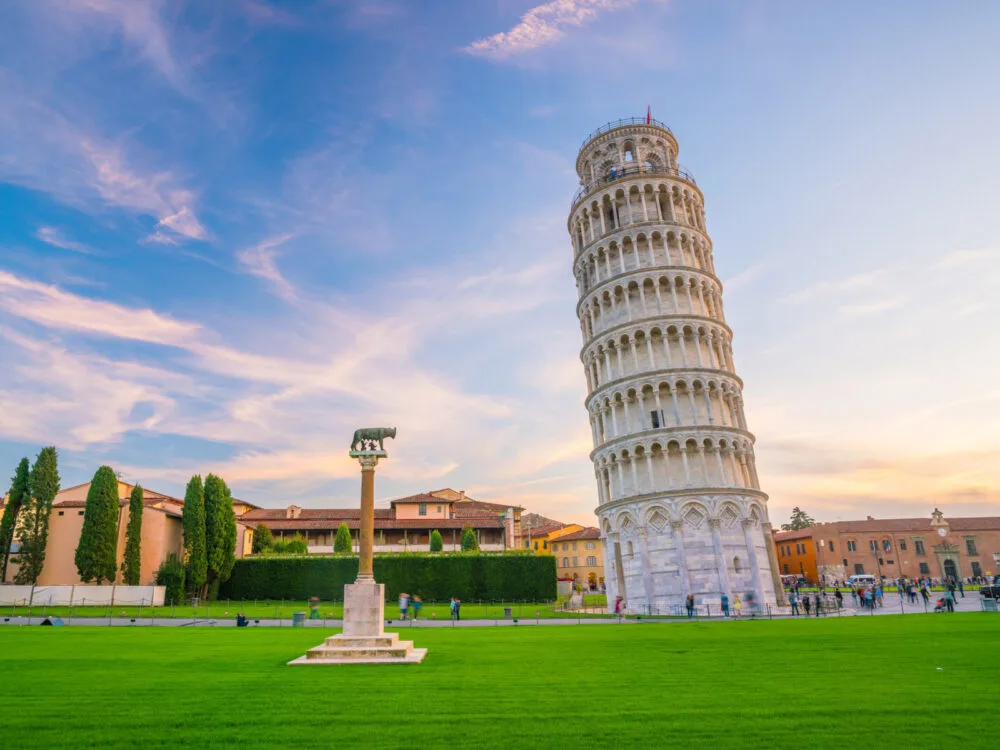
f11photo/Shutterstock
We’ve covered a lot of ground in this guide, so let’s quickly recap. The overall best time to visit Italy is in the late spring/early summer (May to June) and early fall (September to October).
These are the “bookends” to Italy’s busiest peak season that runs from May to September. By visiting in the earliest and latest parts of the peak season, you deal with fewer crowds, slightly lower prices, and absolutely ideal weather. It’s the perfect time to go.
Armed with our info on the best time to go and helpful travel tips to make the most of your stay, you’re going to have a grandioso time here – buon viaggio (happy travels)!
Not sure if Italy is the European destination for you? Check out these travel guides next:



